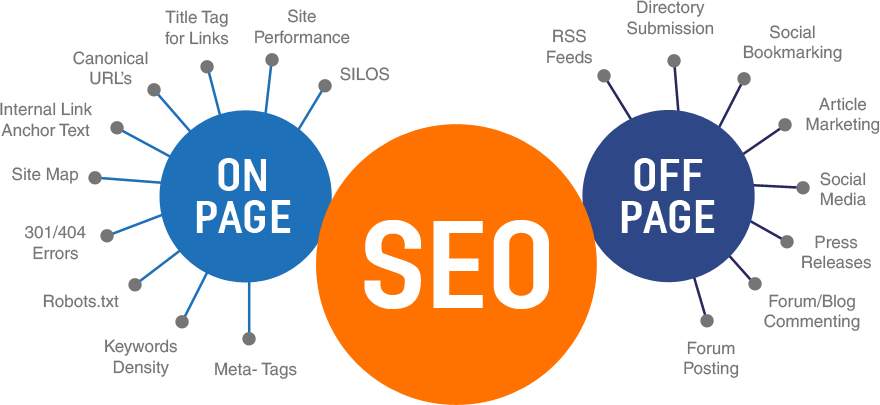
Search engine optimization (SEO) is a great option for small businesses. Search engine optimization (SEO) is a powerful tool that can help small businesses. It is more effective than direct traffic, which is when people search for your website or bookmark it. Search engines will still be able to find your website even if it is not on the first page. SEO allows you to be found in search engines, which results in more organic traffic and sales. Here are some tips to make your website more visible in search results:
Links are the lifeblood of a website's SEO
You can passively create links to websites by developing top content. Podcasts, infographics, blogs, and posts can all help you to get more links. Links indicate that other websites favor your content. You can increase your site's quality by adding more links. These are great ways to create and submit press releases, business directory submissions, and generate content as a guest blogger on third-party sites.
Blog posts can keep your website's content fresh and current.
A blog helps small businesses remain top-of-mind. It can help build trust and clout in the industry which will lead to higher conversion rates. A blog allows businesses to display a more personal side while still maintaining their corporate standards and vision. By creating a blog, a small business can differentiate itself from the competition and grow demand for its products. Why not get started blogging now?

A key part of any SEO strategy is technical audits
A technical audit is essential for any SEO strategy. A technical inspection can expose many problems in a website. In one instance, the company divided its content into seven domains. Each domain built its own search engine power. The company redesign their website without having a migration strategy. This left thousands of pages und hundreds of thousands of links unresolved. What did the result look like? The website is no longer able to rank highly on Google and other search engines.
A logical website structure
The best SEO strategy for small businesses is to create a logical structure for their website. A home page, services page, as well as individual pages detailing each service should be included. Websites follow a pyramid structure with the homepage at its top. Google indexes websites with logical structure. This helps avoid duplicate pages and allows them to not compete for the same keywords. Also, the more important pages of the site should be indexed first so that they appear high in the search results.
Long-tail keywords drive organic traffic
Long-tail keywords can be a great tool for small businesses, even though you might not think it's possible to compete against giants like Amazon and Google. Long-tail keywords refer to search phrases that contain four or more words. These are more specific and represent a demographic that is more likely to convert. Long-tail keywords are easily found in Google Analytics, social data reports, YouTube video statistics, as well as Google My Business listing insights.

FAQ
What Content Strategy can I use to improve my ranking?
A content strategy involves planning how much content you want to produce over time. It includes topics, keywords, and other information about your company. This plan will help you avoid producing too much or too little content.
How much does SEO cost?
SEO is a long-term venture so you won't get immediate returns. Remember that search engines rank websites higher if more people find them.
There are many factors that influence the price of each service. These include keyword competitiveness and location.
Why SEO strategy is important?
SEO (search engine optimization) has the main purpose of increasing traffic to your website by getting as many people to find you using Google.
Search engines like Google and Yahoo! store information about websites in servers called crawlers. They send this data back from the company's central databases. This allows them search engines to index web sites.
More people will click your link and visit your website if your website is high up in the search results. These searches will not show you, so you won't get found.
The most effective way to ensure your site gets noticed is to rank highly in all the major search engines. This can be achieved using one of two methods: paid advertising, or natural organic linking.
Paid Advertising - Paid advertising includes buying adverts from companies who pay-per-click online ads to appear above other sites in search results. These ads may include banner ads, text ads, pop-ups, e-commerce widgets, etc.
Natural Organic Links- These links are ones where you have developed a site that is excellent over time and has earned the trust of others in your industry. Blogs, guest blogging, commenting and linking are all ways to build links.
You must continue to invest in both marketing and sales to stay on top of your game.
How do I get started with SEO?
SEO can be done in many different ways. First, identify the keywords you want to rank for. This is known "keyword search." Next, optimize each page of your website for these keywords.
Optimization involves optimizing titles, descriptions and meta tags. It also includes creating unique page URLs and linking to other websites. After optimization has been completed, you'll need to submit your website to search engines like Google, Yahoo!, and Bing.
To see if you are succeeding or failing, you need to track your progress.
How do SEOs work for me?
The first step towards getting a Google ranking is understanding what they are looking for when someone searches for your company name or products on search engines like google. This guide will teach you how to write high-ranking content on Google. Check out our other guides about content marketing.
To start, you'll want to create a plan and think about what kind of keywords you want to target. There are two types of keywords: broad keywords (like "digital marketing") and specific ones (like "seo").
The next step is to determine your goals, which could be increasing brand awareness, driving leads or sales.
Once you have defined your goals, it's time to begin writing content. Here are some SEO tips.
After your content is written, you can publish it to your blog. This might mean updating your existing pages if you own a website. If not, you need to hire web designers who can help you build one.
Link to your content on blogs and other relevant websites once you've published it. This will increase its visibility and give it greater exposure.
Statistics
- 64% of marketers actively create SEO campaigns because they help hit multiple key performance indicators (KPIs), including increasing traffic, helping your site rank for relevant keywords, improving your conversion rate, and much more. (semrush.com)
- A 62.60% organic traffic boost to that page: (backlinko.com)
- : You might have read about the time that I used The Content Relaunch to boost my organic traffic by 260.7%: (backlinko.com)
- If two people in 10 clicks go to your site as a result, that is a 20% CTR. (semrush.com)
- These guides are designed and coded 100% from scratch using WordPress. (backlinko.com)
External Links
How To
How to Make a Successful Search Engine Optimization Campaign
Creative writing is a skill that requires you to be able to distinguish yourself from others.
Most writers are very similar. Writing follows the same patterns. They are repeating themselves and fall back on clichés.
It is important to break free from these patterns and come up with new ideas. You have to think outside the box.
It also means finding ways to make your writing more interesting. You must think about what motivates your audience when writing for them. What drives them? What makes them giggle? What makes them cry?
What excites them most? What scares?
When you sit down to create, think about these questions. Ask yourself why you think someone would care about your words. What makes you think anyone would read what you have to say?
Once you figure that out, you can begin to craft your story.
Start with your hook. It is important to start with your hook. It is the first impression readers get. You should choose carefully.
Next, you need to decide if your piece will be informative or persuasive. Informational pieces explain facts. Persuasive pieces encourage readers to agree.
Finally, you need to decide whether or not you will be telling stories and giving examples. Stories are fascinating. These examples show you how it works.